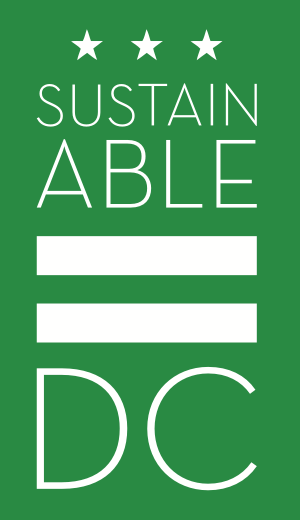

 The District is already experiencing the impacts of climate change. Climate change refers to long-term changes in global temperature, precipitation, wind patterns, and other aspects of climate. These global changes have serious consequences for individuals, neighborhoods, and the District as a whole.
The District is already experiencing the impacts of climate change. Climate change refers to long-term changes in global temperature, precipitation, wind patterns, and other aspects of climate. These global changes have serious consequences for individuals, neighborhoods, and the District as a whole.
To address these challenges, the District Government pursues a dual approach of mitigation and adaptation. Mitigation efforts focus on reducing greenhouse gas emissions to avoid the worst-case scenarios possible with climate change. Adaptation efforts focus on taking action to prepare people, homes, communities, businesses, and infrastructure for the impacts of climate change that are already here and that are projected to occur.
Goal 1: Reduce greenhouse gas emissions from all local sources to put us on track to eliminate emissions by 2045*
Status:  The average progress score of actions under this goal is between “Significant Progress” (3 out of 4) and “Completed or Institutionalized” (4 out of 4). See annual progress reports for details.
The average progress score of actions under this goal is between “Significant Progress” (3 out of 4) and “Completed or Institutionalized” (4 out of 4). See annual progress reports for details.
What's Been Done?
- The Department of Energy and Environment publishes the District’s greenhouse gas emissions each year.
- The District has held several campaigns to encourage energy reduction and connect residents with energy efficiency programs, including Power Down DC, Reduce Energy DC, and Front Door DC.
- The Department of Energy and Environment released a 2021 Fugitive Methane Emission Survey of the District of Columbia as a preliminary survey of where fugitive methane emissions may be occurring, and to identify where such emissions may become a concern due to their potential for high-volume emissions.
- The District modernized streetlights through the DC Smart Street Lighting Project to reduce energy.
What is Left to Do?
- Continue to build awareness and provide resources to empower people and organizations to reduce their share of greenhouse gas emissions.
- Eliminate methane gas leaks into the atmosphere throughout the District.
Goal 2: Advance physical adaptation and human preparedness to increase the District’s resilience to climate change
Status:  The average progress score of actions under this goal is between “Initiated” (1 out of 4) and “Moderate Progress” (2 out of 4). See annual progress reports for details.
The average progress score of actions under this goal is between “Initiated” (1 out of 4) and “Moderate Progress” (2 out of 4). See annual progress reports for details.
What's Been Done?
- The District has the Green Area Ratio as an environmental sustainability zoning regulation that sets standards for landscape and site design to help reduce stormwater runoff, improve air quality, and keep the city cooler.
- Climate impacts have been taken into account for several facilities, including the Marvin Gaye Recreation Center and Southwest Library being elevated, and the construction of a floodwall to protect the Blue Plains Advanced Treatment Plant, all to avoid or minimize damage from flooding.
- The District published the Resilience Design Guidelines to support conducting a climate resilience needs assessment and suggest steps for planning, designing, and constructing projects to support resilient outcomes in the built environment.
- The Homeland Security and Emergency Management Agency’s Resilience Bureau Community Outreach Team engages District residents on a broad range of hazard specific information including extreme heat, storms, and flooding.
- The District is developing an integrated flood model that considers coastal, riverine, and inland flooding to identify where flood management investments are needed most.
- The District launched the FloodSmart Homes program in 2022 to support homeowners in reducing their risk from flooding.
- Through the efforts of the Ward 7 resilience Hub Community Committee and support from District Government agencies, the FH Faunteroy Center and Resilience Incubator is the District’s first resilience hub.
What is Left to Do?
- Evaluate and reduce the vulnerability of the District’s infrastructure to the anticipated impacts of climate change.
- Improve emergency and community preparedness to respond to climate change events.
- Require all new development projects to assess climate risks and incorporate climate adaptation solutions.
- Fully implement and regularly update the Climate Ready DC plan.
Last updated: June 2025

